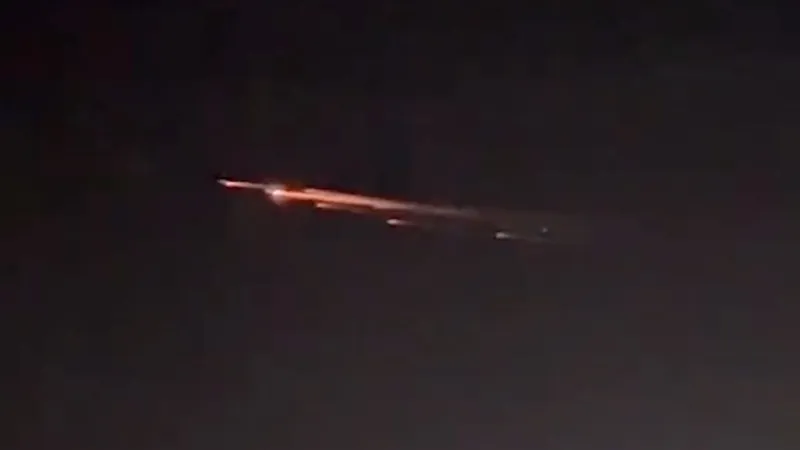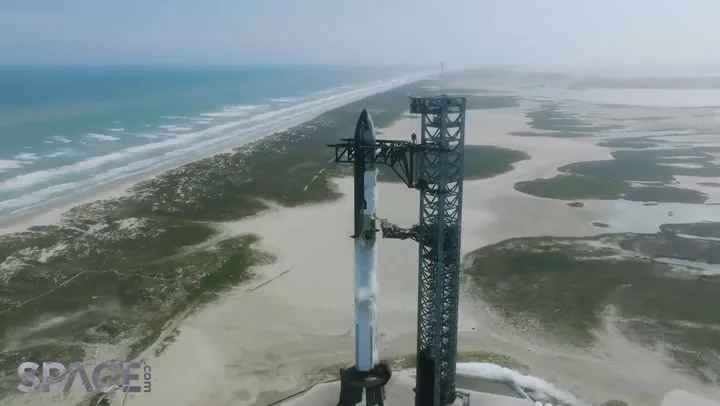
Witness the Spectacular Fireball as a Dead Chinese Satellite Disintegrates Over the Southern U.S. (Video Inside)
2024-12-23
Author: Wei Ling
This past weekend, a stunning fireball illuminated the night sky above several southern states in the United States—but this wasn't a celestial phenomenon. Instead, it was the dramatic disintegration of Chinese space debris.
The spectacular event occurred on the night of December 21, when a defunct Chinese commercial Earth imaging satellite known as Superview 1-02, or GaoJing 1-02, met its fiery end upon reentering Earth's atmosphere. The satellite blazed through the skies over Mississippi, Arkansas, and Missouri, captivating stargazers who were treated to a show of multiple streaks of lights that punctured the night.
Astrophysicist Jonathan McDowell from the Harvard-Smithsonian Center for Astrophysics, who diligently tracks satellite trajectories, noted on social media how the dying satellite reentered the atmosphere above New Orleans at 0408 UTC on December 22 (10:08 PM CST on December 21). He provided insights into the satellite's path, confirming its trajectory towards several southern states and sharing the impressive data collected during its descent.
This remarkable fireball was not only seen by those in the immediate vicinity; reports came flooding in from across at least 12 states, ranging from Texas to Florida and extending as far north as Indiana and Illinois. The American Meteor Society received over 120 witness accounts detailing the event, showcasing the widespread fascination—albeit anxiety—this celestial event sparked among the public.
Meteorologist Christopher Rainer from the National Weather Service in Jackson, Mississippi, confirmed that his agency started receiving reports of the fireball shortly after 10 PM local time. Initially, officials speculated it was a meteor breaking apart, assuring the public that there was no risk to anyone on the ground.
The Superview 1-02 satellite was one of two satellites launched into orbit by China's SpaceView in December 2016. The satellites were deployed aboard a Long March 2D rocket but not without complications. Instead of being placed into a stable circular orbit approximately 330 miles (530 km) above the Earth, they were initially deployed into irregular elliptical orbits, ranging from 133 miles to 326 miles (214-524 km) above our planet. This hiccup did not hinder the satellites from eventually performing their intended missions, which revolved around high-resolution Earth observation.
These satellites represented a significant milestone for China—they were the nation's first commercial high-resolution Earth imaging satellites. Each satellite weighed about 1,235 pounds (560 kg) and was equipped with cameras capable of capturing images with a resolution of around 0.5 meters per pixel.
The fiery demise of Superview 1-02 serves as a reminder of the ongoing challenge posed by space debris in our atmosphere and highlights the importance of responsible spacecraft management in an increasingly crowded orbital environment. So, what can be done to mitigate future incidents like this? Stay tuned for more insights on the challenges of space exploration and admission of retired satellites!




 Brasil (PT)
Brasil (PT)
 Canada (EN)
Canada (EN)
 Chile (ES)
Chile (ES)
 España (ES)
España (ES)
 France (FR)
France (FR)
 Hong Kong (EN)
Hong Kong (EN)
 Italia (IT)
Italia (IT)
 日本 (JA)
日本 (JA)
 Magyarország (HU)
Magyarország (HU)
 Norge (NO)
Norge (NO)
 Polska (PL)
Polska (PL)
 Schweiz (DE)
Schweiz (DE)
 Singapore (EN)
Singapore (EN)
 Sverige (SV)
Sverige (SV)
 Suomi (FI)
Suomi (FI)
 Türkiye (TR)
Türkiye (TR)